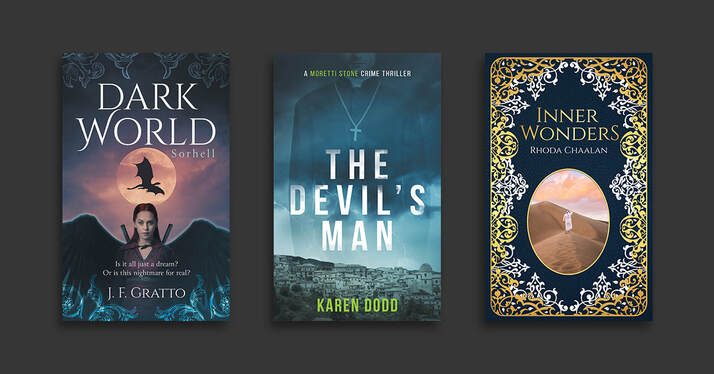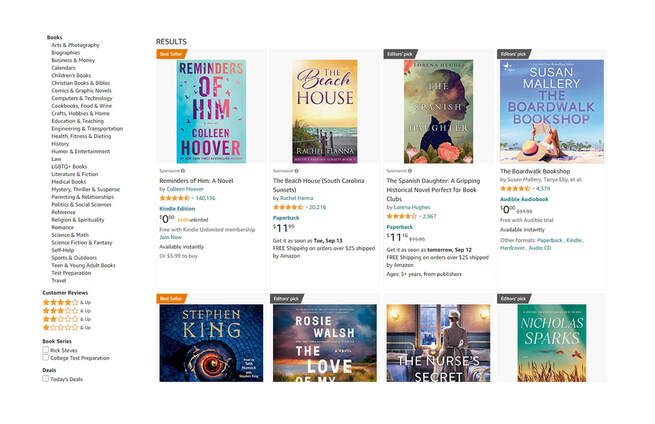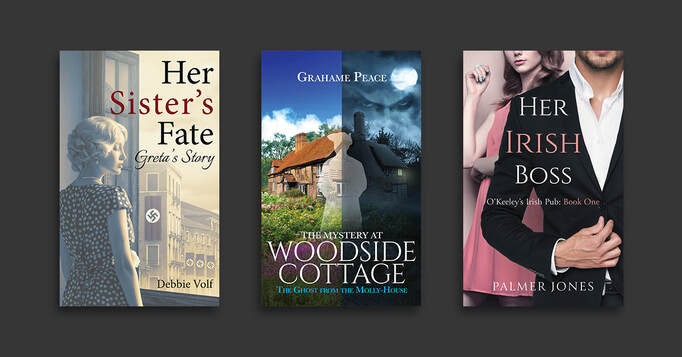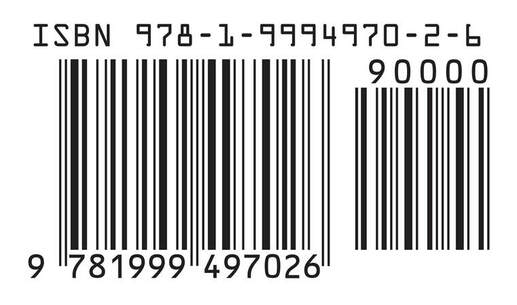|
There are a lot of details which should go into the front and back cover of a book, as the face and advertising of your publication, the cover design should be eye-catching and at the same time sell the title to a reader, but aside from an image with your name and the book’s title upon it, what should you consider for the cover? To begin with you need to understand two things, firstly, the book and its concept, and secondly the marketplace and its space within it. So, let’s look at the first element, your book and its primary focal point. Now no one knows your book like you, after all, you did write it, but, you still have to step back a little and look at the overall concept, this can mean condensing the message down to one main focal point. I also know that it is very easy to think that there are so many elements within the book that the reader needs to know about them all from just looking at the cover, however, many times if you try to place too many parts upon the front and back page it will simply confuse the viewer. Condensing the book into a synopsis is something that most authors will have to do for both the back pages blurb and when selling their book to either an agent, publisher or a potential reader. Getting the key points down to 250 words is a lot harder than you may think, but it will help you in realizing what the main point of the book’s cover should focus upon. The second thing to understand is your book’s marketplace, who will your target audience be and what is your competition. A key thing to remember here is that not everyone will want to buy your book, this might sound harsh, but it is true nonetheless. If you look at the most popular books ever sold, not everyone bought them and not everyone will read them either. The point is, that in a world and market which is very heavily saturated, it pays to be specific with your targeting and focus on your niche. So, know who will read your book and focus on appealing to them. You’ll also need to look at what’s currently on offer within your chosen genre, a search via Amazon makes this so much easier to do than ever before. If you look at the top 100 lists for your genre, these books are your competition, so you have to ensure that your book’s front and back page cover design looks like it belongs there. Researching either online or in a traditional bookstore will also help you to gain inspiration from the books released from professional big name publishing houses. Moving on to the copy upon your book’s cover. The obvious elements are title, subtitle and author name, these three things are important (although not all books will have a subtitle). But even here, there are choices to be made, for example, with your name, do you use a pen name or your own? Will you use a full first name or just initials? Why is this important? People make decisions unconsciously when buying books, more women buy from female authors than male readers do, so choosing a name which is gender neutral can see an increase in readers from men. Also, if you are planning to publish other books in the future that may be within a different genre, using a different name is advantageous, a lot of big-name authors do this all of the time. The title and subtitle of your book are the other areas to consider. Most authors will write their books with a working title, this can change when it comes to publication, and in some cases it should. Several things to keep in mind with your title is in keeping it relatively short (as they tend to be more memorable), unique and evoke the emotions of the reader, they should be enticed by the title and want to know more. The subtitle is something that can get overlooked, or worse, wasted. This is another opportunity to sell your book, so use it. But as with the title, keep it shorter, a line of text which gets straight to the point with either a question or powerful statement can really help. The subtitle for a non-fiction book can and will normally be longer than that of fiction, here you will normally place a statement which qualifies why the reader should buy your book and what they can expect from it in return. Quotes for your cover, should you use them? Having a couple of quotes for your book cover is a brilliant selling point, and in most cases I would advise adding them. On the front page you should keep them to a line with another giving the persons details who made the quote, for the back page, you can add a couple more and have them a bit longer. A great quote from a qualified source can go a long way in selling your book. What about the blurb for your back page? The blurb should be around 250 words and focus in on the key elements of your book and will be structured differently for fiction and non-fiction, you can read our article on how to write a blurb for more specifics. Here you can learn about what to add, including elements like your bio and profile image. Finally, the barcode, for each addition of your book you will need an ISBN (International Standard Book Number), although you will only need a barcode for your printed books, within the barcode you’ll have two elements, the first and large code will be for the ISBN and the smaller is for the book’s price. Again, we have a great article on ISBNs for your book which goes into this area in more depth.
0 Comments
Your comment will be posted after it is approved.
Leave a Reply. |
JD&JCategories
All
Archives
July 2024
All information within this website (including its blog) is published in good faith and for general information purposes only. JD&J Design LLC does not make any warranties about the reliability and accuracy of this information. Any action you take upon the information in this website is strictly at your own risk. JD&J Design LLC is not liable for any losses and/or damages in connection with the use of this site and information.
|







